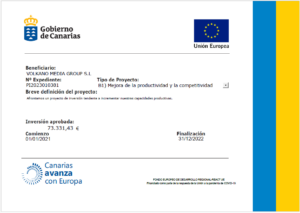Intermediate goods are goods used as input to create the final products sold to the consumers. They may sometimes even refer to goods converted into another kind of intermediate good to be used to build a final product. For example, milk that is used to create butter and sold to the final consumer is an intermediate good.
International trade in goods by product
It also have backorder management which will ensure that you never fall short of any inventory. Deskera Books will also help you to keep a track of your outstanding account receivables and account payables, hence ensuring you have a healthy cash flow. It’s important to recognize that services may be viewed as intermediate goods. For instance, in the photography sector, the actual photographs are the end good, but the service of processing images is considered the intermediate good. They need to have some value added to the intermediate items because they are not yet ready for usage. Commodities that have undergone partial preparation are referred to as intermediate products, unfinished goods, or partially completed goods.
Intermediate Good: Definition and Examples
On the contrary, final goods are the goods which are readily available to sale, to the ultimate consumer of the product. A good is said to be intermediate both when it is used within the production chain of another good and when it requires a certain degree of modification. Commerce Mates is a free resource site that presents a collection of accounting, banking, business management, economics, finance, human resource, investment, marketing, and others. Here, the salt used in the preparation of bread acts as an intermediate good while salt used for direct consumption is classified as a final good.
World trade in goods: developments between 2010 and 2021
If a consumer buys a bag of sugar to use at home, it is a consumer good. But if a manufacturer purchases sugar to use during the production of another product, it becomes an intermediate good. Final goods are referred to as those goods which do not require further processing. These goods are also known as consumer goods and are produced for the purpose of direct consumption by the end consumer. Figures 1 and 2 provide information on the share of world exports and imports of goods, showing developments between 2010 and 2021.
Intermediate Goods and GDP
A diol and a diisocyanate react to create polyurethane, which is chlorine-free. Chlorine is employed because it lowers the atom economy and is electromotive enough to create an isocyanate without becoming a component of the final product. Because the definition of intermediate goods is so broad, a wide array of various items can be called intermediate goods or secondary intermediate goods— everything from salt to steel to semiconductors. Intermediate goods are distinct from consumer goods and capital goods.
px» alt=»intermediate goods example»/>https://www.1investing.in/ process and are ready to be fitted or mixed or processed with the final product. This final product itself could also be called the finished goods. It is to be noted that intermediate goods are not the same as capital goods.
If the same butter is passed on to a bakery to create cakes, the butter also becomes an intermediate good in this situation. However, it’s more typical for one business to generate intermediate goods and then sell them to other producers so they may utilize them to create their finished goods. In the auto industry, an engine is frequently built by one company (an intermediate good) and sold to a vehicle manufacturer, who then uses it to make cars and market them to consumers. Intermediate goods that fit both the intermediate and finished goods inventory classification can be used as ingredients for other things or consumed as a final product. Another example is sand, which can be used as an intermediate good to make concrete or glass or sold directly to consumers to fill a sandbox.
Both intermediate and capital goods are used to produce consumer goods. But while intermediate goods are the ingredients of that final product, capital goods are the tools needed to “mix” them. On the other hand, finished goods are also called final goods or consumer goods. Finished goods can be sold to other businesses or directly to individual customers. The problem with this method of measurement is the concept of double-counting.
Machinery, land or tools that are used as factors of production are regarded as capital goods. Capital goods are not included in the final product but intermediate goods can be included in the final product. The global financial and economic crisis had a considerable impact on the level of international trade in goods; this was in contrast to the pattern of development for trade in services which was less affected by the crisis.
The EU economy is one of the most ‘open’ global economies with import tariffs on industrial products among some of the lowest in the world. For example, in 2021 only 4.9 % of non-agricultural products faced import duties in excess of 15 % (see Table 6). The EU also has a comprehensive network of arrangements for preferential trade that goes beyond more general WTO rules, for example, giving many developing countries preferential access to its markets for ‘everything but arms’.
In macroeconomics, gross domestic product (GDP) measures the total market value of all final goods and services produced within a given economy. Capital goods don’t get transformed by dissolving or changing shape during production. For example, when the baker uses the intermediate good salt to create his bread, the salt is transformed into an indistinguishable element of the final loaf.
On the other hand, an example of an intermediate good used to produce another intermediate good is the journey of cocoa beans. Cocoa beans are grown by a farmer and sent to a cocoa butter manufacturer. The cocoa butter is now sent forward to a chocolate manufacturer and is used to create chocolates. Intermediate goods can become a part of the final product, or they may get changed beyond recognition during the production process of creating finished goods. Intermediate goods generally can be made and used in three different ways. Second, a company can manufacture intermediate goods and sell them to others.
This approach counts every phase of processing included in production of final goods. The farm’s sales of blueberries to the general public are counted when determining the farm’s contribution to the US GDP; however, sales of blueberries to supermarkets and a jam factory are not. This avoids duplicate counting since the product will be sold to end users by grocery stores and jam producers, who will also be included in the GDP calculation. These figures show healthy trade flows, which can be made possible by astute trade policy.
Table 4 reverses the focus of the analysis, detailing for each country where its relative trade specialisation lies. The information presented confirms the role played by the natural endowments of particular intermediate goods example goods. For example, Australia, Brazil and South Africa were all relatively specialised in exporting raw materials, whereas these products accounted for the highest import specialisation ratio in China.




